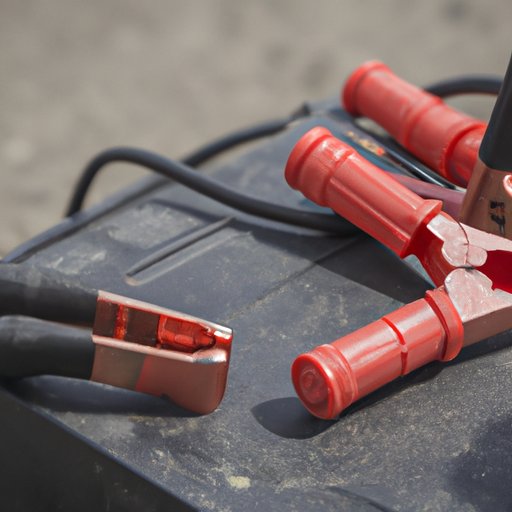Introduction
Car batteries are essential components of your vehicle, providing it with the power it needs to start and maintain its electrical systems. Over time, car batteries will begin to wear out, reducing their efficiency and eventually needing to be replaced. While you can take your vehicle to a mechanic for a battery replacement, doing it yourself at home is a much more cost-effective option.
This article will provide a step-by-step guide to replacing your car battery at home. We’ll cover what tools and supplies you’ll need, how to locate the battery in your vehicle, how to disconnect the old battery, how to connect the new battery, and how to test the new battery.

Gather Necessary Tools and Supplies
Before you begin, you’ll need to make sure you have all the necessary tools and supplies on hand. The exact list of items you’ll need will depend on your vehicle’s make and model, but here’s a general list of what you should have available:
- New car battery
- Battery terminal cleaner
- Wire brush
- Socket wrench
- Pliers
- Protective gloves
- Safety glasses
You’ll also need some basic supplies such as rags, paper towels, and baking soda.
You can purchase all of the necessary tools and supplies from your local auto parts store or online. Be sure to check the specifications of the new battery to make sure it’s compatible with your vehicle.
Locate the Battery in Your Vehicle
Once you have all of the necessary tools and supplies, you can begin the process of replacing your car battery. The first step is to locate the battery in your vehicle. Depending on the make and model of your car, the battery may be located in different places.
In most cars, the battery is located in the engine bay, either under the hood or in the trunk. It may also be located underneath the rear seat or in the glove compartment. If you’re having trouble finding the battery, consult your vehicle’s owner’s manual for more information.
Disconnect the Old Battery
Once you’ve located the battery, the next step is to disconnect the old battery. Before you begin, it’s important to take safety precautions. Make sure you’re wearing protective gloves and safety glasses to protect your hands and eyes from any potential hazards.
To disconnect the old battery, start by removing the negative terminal first. Use a socket wrench to loosen the nut on the terminal, then pull the cable off the battery. Next, remove the positive terminal, again using a socket wrench to loosen the nut. Once both terminals are disconnected, you can remove the old battery from the vehicle.
Connect the New Battery
Now that the old battery is removed, you can install the new battery. Start by positioning the new battery in the same location as the old one. Then, attach the positive terminal first, followed by the negative terminal. Make sure both terminals are securely tightened.
Test the New Battery
Once the new battery is connected, it’s important to test it to make sure it’s working properly. The first step is to check the voltage of the battery. You can do this using a multimeter. Make sure the voltage is within the range specified by the manufacturer.
It’s also a good idea to test the battery with a load tester. This device applies a load to the battery to simulate the conditions of actual use. If the battery passes the load test, it’s ready to go.
Conclusion
Replacing a car battery at home is a relatively simple process that can save you money in the long run. To get started, gather the necessary tools and supplies, locate the battery in your vehicle, disconnect the old battery, connect the new battery, and test the new battery. With a little bit of knowledge and some basic tools, you can easily replace your car battery yourself.
(Note: Is this article not meeting your expectations? Do you have knowledge or insights to share? Unlock new opportunities and expand your reach by joining our authors team. Click Registration to join us and share your expertise with our readers.)
